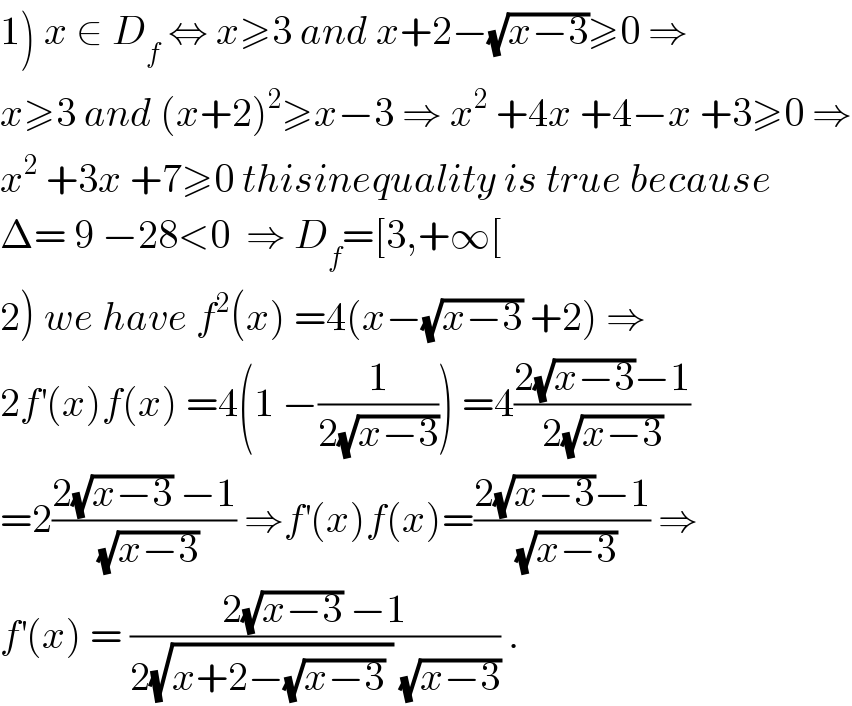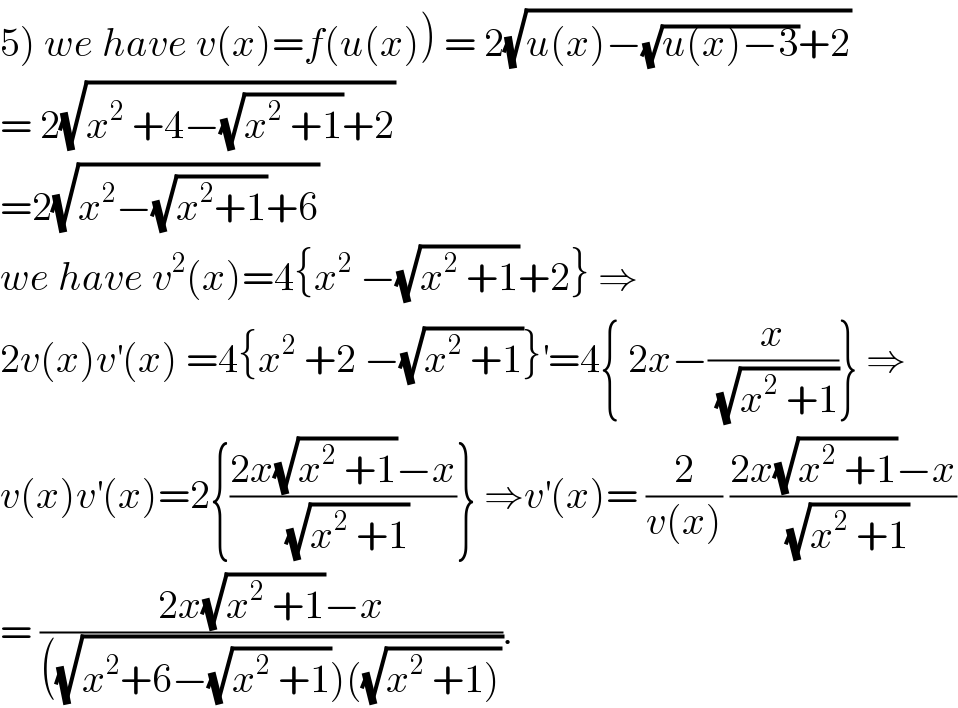
Question and Answers Forum
Previous in Relation and Functions Next in Relation and Functions
Question Number 39702 by math khazana by abdo last updated on 10/Jul/18

Commented by math khazana by abdo last updated on 13/Jul/18

Commented by math khazana by abdo last updated on 13/Jul/18

Commented by maxmathsup by imad last updated on 14/Jul/18

Commented by maxmathsup by imad last updated on 14/Jul/18

Commented by ajfour last updated on 14/Jul/18

Commented by math khazana by abdo last updated on 15/Jul/18

